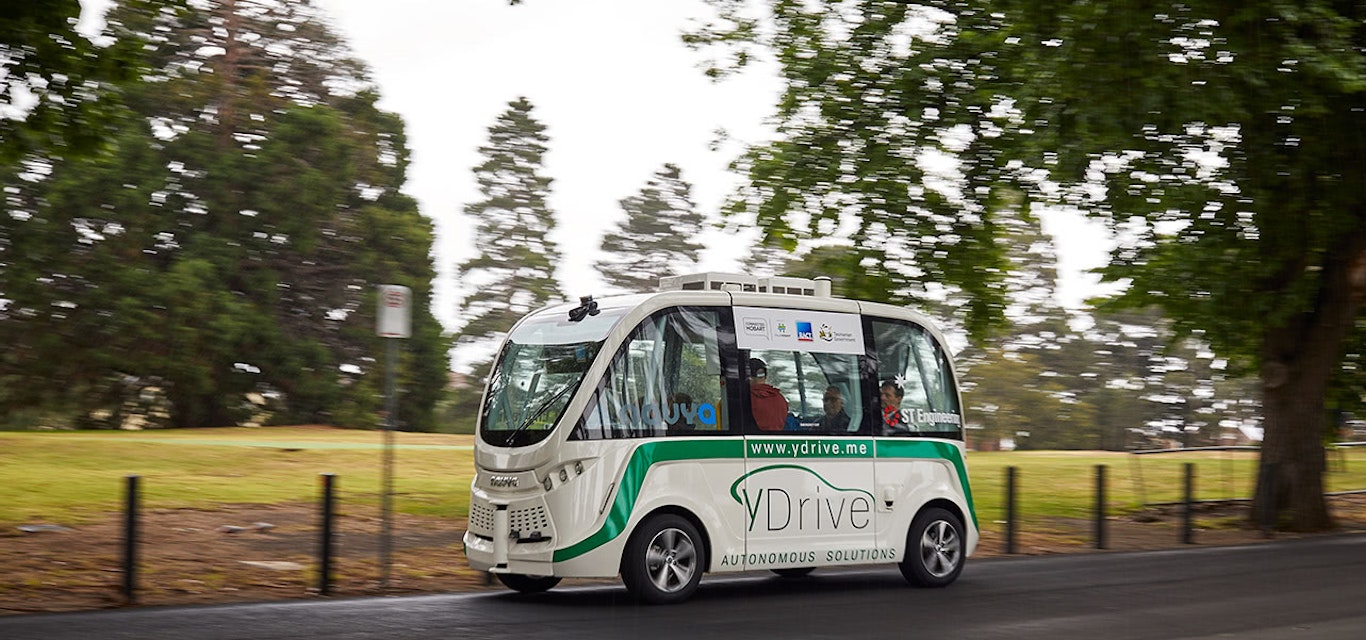Exploring emerging technology
The coming years will see a substantial change in the way we travel, with driverless vehicle technology on our doorstep.
That is why we, along with the City of Hobart and the Tasmanian Government, undertook the state’s first demonstration of a driverless electric bus late last year.
From 6-13 December, an electric NAVYA Autonom shuttle bus was showcased to Tasmanian transport stakeholders and the community in Lower Sandy Bay.
The aim was to help us better understand and prepare for this emerging technology, how it can be applied in the state, and how it will affect the future of transport.
But it was much more than just a one-week process. It took months of preparation, with a lot of learning along the way.
The process
In March last year we partnered with autonomous vehicle distributor YDrive to help deliver the demonstration.
A number of different locations were scouted, including Salamanca Place, the Queens Domain and the University of Tasmania’s Sandy Bay campus.
Lower Sandy Bay was selected as it has corners, trees and buildings to navigate around, as well as low traffic numbers.
Residents were informed of the demonstration, with a Traffic Management Plan, warning signs, speed limit signs and no-standing areas also established.
It took a week for NAVYA deployment engineer Francois Pollet, working with us and the City of Hobart, to generate a map of the route.
This involved mounting a mobile mapping system on top of a car and mapping the area. We did several laps, with the road, kerbs, stationary vehicles, car parks, trees and buildings all recorded.
The bus was also programmed to stop and give way at intersections and its designated pick-up and drop-off zones.
All data was sent back to NAVYA in Paris for processing and refinement. The final map was then generated and sent back to Hobart to be installed into the bus’s computer.
The bus drives itself through a global navigation satellite system (GNSS), which determines its precise location geographically, as well as 2D and 3D light detection and ranging (LIDAR) surveyors. These use lasers to create perception maps of the environment, vehicles, pedestrians, curbs and buildings. This allows precise positioning, as well as obstacle detection and avoidance.
The bus also has cameras to detect lane markings, signs and traffic lights; odometry to measure the speed of each wheel to estimate vehicle speed and position; and autonomous emergency braking. If necessary, the bus can also be manually controlled by an onboard operator through the use of an X-Box controller.
While the bus’s top speed is 25km/h, its operational speed for the demonstration was limited to 18km/h.
The challenges
As this technology is in its infancy, the trial took months of planning and overcoming a number of logistical issues, including choosing the location for the trial.
The bus had to be transported from Singapore, with shipping, clearances from Australian Customs and the need for a Vehicle Import Authority to be organised.
Additionally, due to the driverless operation and design, it couldn’t be registered. This resulted in us needing a short-term unregistered vehicle permit.
Even during the demonstration, which included the the mapping and testing, low-hanging tree branches impeded both the bus’s LIDAR and GPS, while cars parked in the path of the bus’s sensors caused it to stop.
The demonstration
The demonstration was far more popular than we expected. Our members snapped up all of the initial spaces on the bus in minutes, so we had to organise some more.
Overall, we welcomed about 300 people on board, including our members, stakeholders, school students and community groups.
People asked questions about the impacts on employment in the bus and transport industry, community trust and safety concerns, mobility access, technological features, legislative requirements, cost, and a variety of other challenges and opportunities.
These were all part of our research and will enable us to form our next steps in communication and advocating for this new technology.
The opportunities
Our demonstration showed that through adequate planning, investment and education, driverless buses – particularly those running on fixed routes and dedicated lanes – can operate in real-world environments.
Some of the opportunities for these vehicles include first and last mile connections to other transport modes, such as public transport or ride-sharing, as well as reduced congestion and emissions, and less need for car parking.
There are also many applications for those who have mobility challenges.
We will now look to use what we have learned to form a view on how we should move forward.
